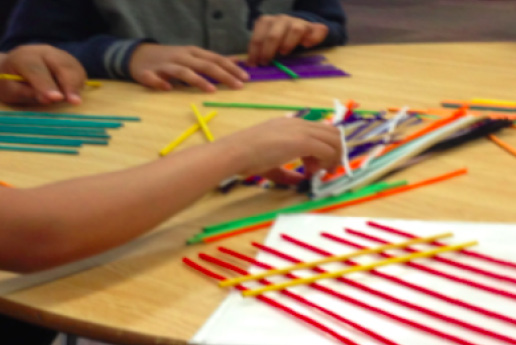Curriculum – Number Sense and Numeration
To have students go from one representation to another, recognize the connections between representations, and use the different representations appropriately and as needed to solve problems.
For students to form various representations to help them understand mathematical concepts and relationships; communicate their thinking, arguments, and understandings; recognize connections among related mathematical concepts; and use mathematics to model and interpret realistic problem situations.
Goal
To have students learn about a way of visually representing the multiplication of multi-digit whole numbers.
Materials
- White board or paper for every student
- Coloured dry erase markers (at least 3 colours per student) or coloured markers or pencil crayons
Optional:
- Large chart paper and markers for “graffiti brainstorming”
- Audio-visual equipment with internet to play instructional video
- Thin coloured wooden dowels

Lesson
Introduction
- Graffiti Board: Ask students to draw or write down anything they might know about multiplication on their corner of a communal piece of chart paper.
- Give them one minute and then ask students to share.
- Big ideas in multiplication include: arrays and repeated addition.
Lesson
- Introduce visual multiplication using coloured lines to show place value (Appendix A).
- An explanatory YouTube video can be played at this point http://m.youtube.com/watch?v=e-P5RGdjICo
Activity
- Students can choose to use the wooden dowels or markers and paper.
- Challenge students to figure out a few multiplication questions together as a group; then students can pair up and challenge each other.
Closure
- Have a discussion about why or why not this is a method of visual multiplication that they would use.
- This activity provides the opportunity to strengthen students’ understanding of place value and the meaning of the multiplication algorithm.
Possible Extensions
- Challenge students to think about when this method is helpful and when it might not be (e.g. when is this method more laborious than algorithms they know).
- Ask students why this method works.
*Download the lesson to see all appendices.
*This method has possible Japanese origins.

